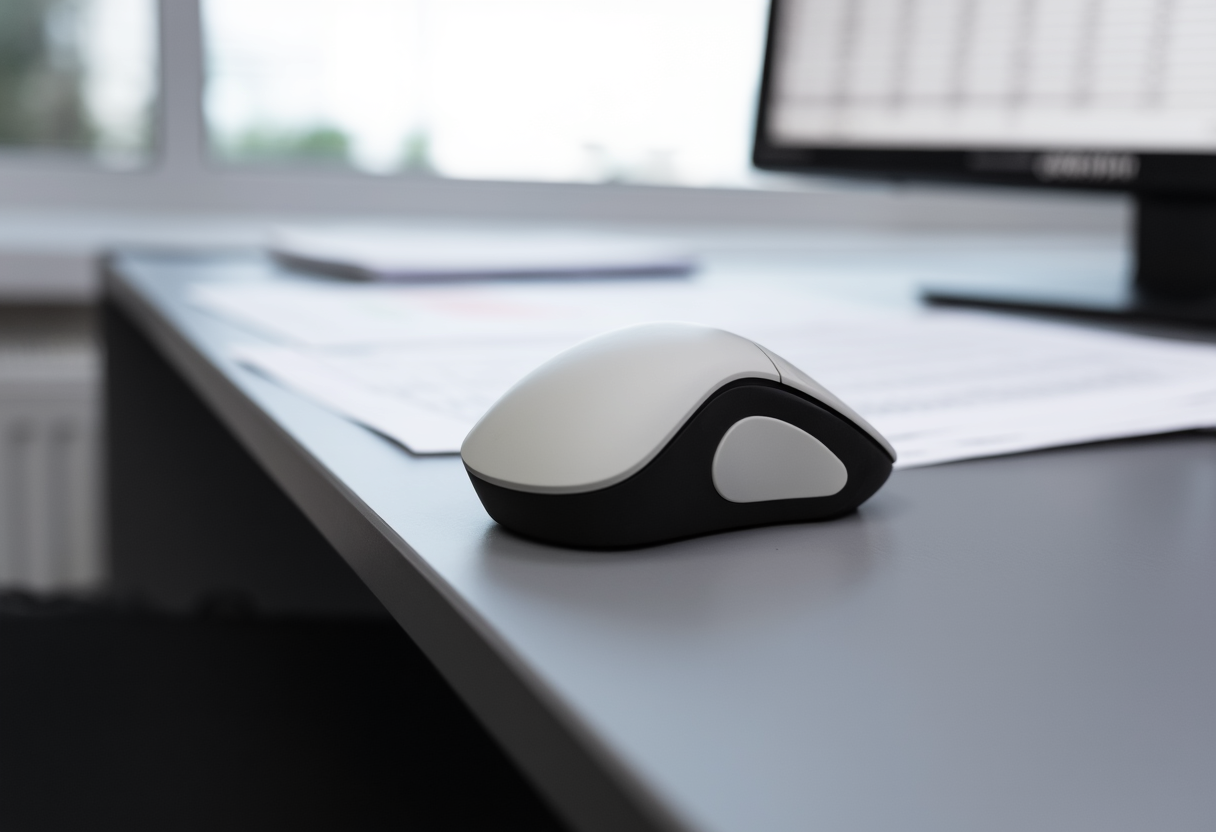The Ultimate Guide to Choosing an Ergonomic Mouse for Carpal Tunnel Relief
In today's digital age, the risk of developing carpal tunnel syndrome is significant due to prolonged computer use. An ergonomic mouse can be a game changer, providing comfort and support. This guide covers essential features to look for in an ergonomic mouse, potential benefits, and how it can alleviate discomfort associated with carpal tunnel syndrome. Discover how the right mouse can enhance your productivity while prioritizing your health.
Understanding Carpal Tunnel Syndrome
Carpal tunnel syndrome is a condition resulting from pressure on the median nerve in the wrist. This can lead to feelings of numbness, tingling, and discomfort in the hand and fingers. Such symptoms can be exacerbated by extended hours of computer work. Therefore, using an ergonomic mouse for carpal tunnel relief is more than just a choice; it is essential for those at risk. An ergonomic mouse for carpal tunnel can effectively reduce wrist strain, leading to a more comfortable user experience. Understanding this syndrome is pivotal in making informed decisions about workspace ergonomics. By choosing the right tools, individuals can mitigate symptoms and enhance their comfort levels significantly. Thus, it's advisable for professionals and casual users alike to consider how an ergonomic mouse for carpal tunnel may benefit them.
Features to Look For in an Ergonomic Mouse
When selecting an ergonomic mouse for carpal tunnel syndrome, several features are crucial. First, the shape of the mouse should fit the contours of your hand, minimizing wrist strain. Additionally, consider a mouse that allows for a neutral wrist position, such as a vertical design. Buttons should be easily accessible without the need to stretch fingers uncomfortably. Another aspect is the weight and size, which should allow for comfortable prolonged use. Furthermore, customizable buttons can enhance usability, especially for those who frequently execute repetitive commands. It's clear that choosing the right ergonomic mouse for carpal tunnel management involves looking at various features to ensure they align with personal comfort and ergonomic practices. Users are encouraged to try different models before purchase to find their ideal fit. Thus, an informed choice can lead to a significant reduction in discomfort symptoms associated with carpal tunnel syndrome.
Benefits of Using an Ergonomic Mouse
The distinct advantages of an ergonomic mouse for carpal tunnel symptoms are multifaceted. First and foremost, it helps maintain proper posture while using the computer, which is vital in preventing strain injuries. Users often report less fatigue and discomfort after switching to an ergonomic design. Beyond comfort, such mice can enhance productivity by reducing the frequency of breaks taken due to discomfort. They also promote better hand positioning, lowering the risk of developing further musculoskeletal issues. Moreover, many ergonomic models come equipped with technology that tracks movements precisely, offering an additional comfort layer. Thus, integrating an ergonomic mouse for carpal tunnel relief can yield tangible benefits in both comfort and efficiency. Ultimately, investing in such equipment is not just about addressing current issues but preventing future complications.
Integrating an Ergonomic Mouse into Your Workstation
Incorporating an ergonomic mouse for carpal tunnel relief into your workstation requires more than mere selection; it necessitates understanding your environment. First, assess your desk height to ensure your elbows are at a 90-degree angle. The mouse should be positioned at the same level as your keyboard to maintain an ergonomic setup. Additionally, consider other accessories like wrist rests to support your wrists further. Proper monitor height is also essential; it should be at eye level to discourage poor posture. Furthermore, adopting regular breaks and physical stretches can complement the use of an ergonomic mouse for carpal tunnel effectiveness. These strategies collectively enhance your workstation ergonomics, minimizing the risk of strain-related injuries. Therefore, combining the ergonomic mouse with thoughtful workstation practices is crucial for optimal benefits.
Common Myths About Ergonomic Mice
Several misconceptions surrounding ergonomic mice can mislead potential users. One prevalent myth is that all ergonomic designs are large and bulky, which isn't true; various sizes and shapes cater to different hand sizes. Another common belief is that ergonomic mice are primarily for individuals already suffering from injuries. In fact, even healthy users can benefit from incorporating an ergonomic mouse for carpal tunnel prevention. Some individuals also think that switching to an ergonomic mouse requires a significant adjustment period, while many find they adapt quite quickly. By addressing these myths, users can make better-informed decisions regarding their ergonomic equipment. Therefore, empowering users with accurate information can aid in reducing hesitancy towards using an ergonomic mouse for carpal tunnel relief.
Final Thoughts on Choosing an Ergonomic Mouse for Carpal Tunnel
Selecting an ergonomic mouse for carpal tunnel syndrome is an essential step in nurturing long-term wrist health. Key considerations include design, comfort, and how well it integrates with your overall workspace configuration. Understanding carpal tunnel syndrome and its implications can further influence your choice, ensuring you select a mouse that alleviates discomfort rather than contributing to it. The benefits are varied and extend beyond just immediate relief; they encompass enhanced productivity and long-term health sustainability. Overcoming myths surrounding ergonomic designs can empower individuals to choose wisely. As the digital landscape continues to evolve, prioritizing ergonomics is more critical than ever. Thus, an ergonomic mouse for carpal tunnel management is not merely a tool but a pivotal investment in overall well-being.
